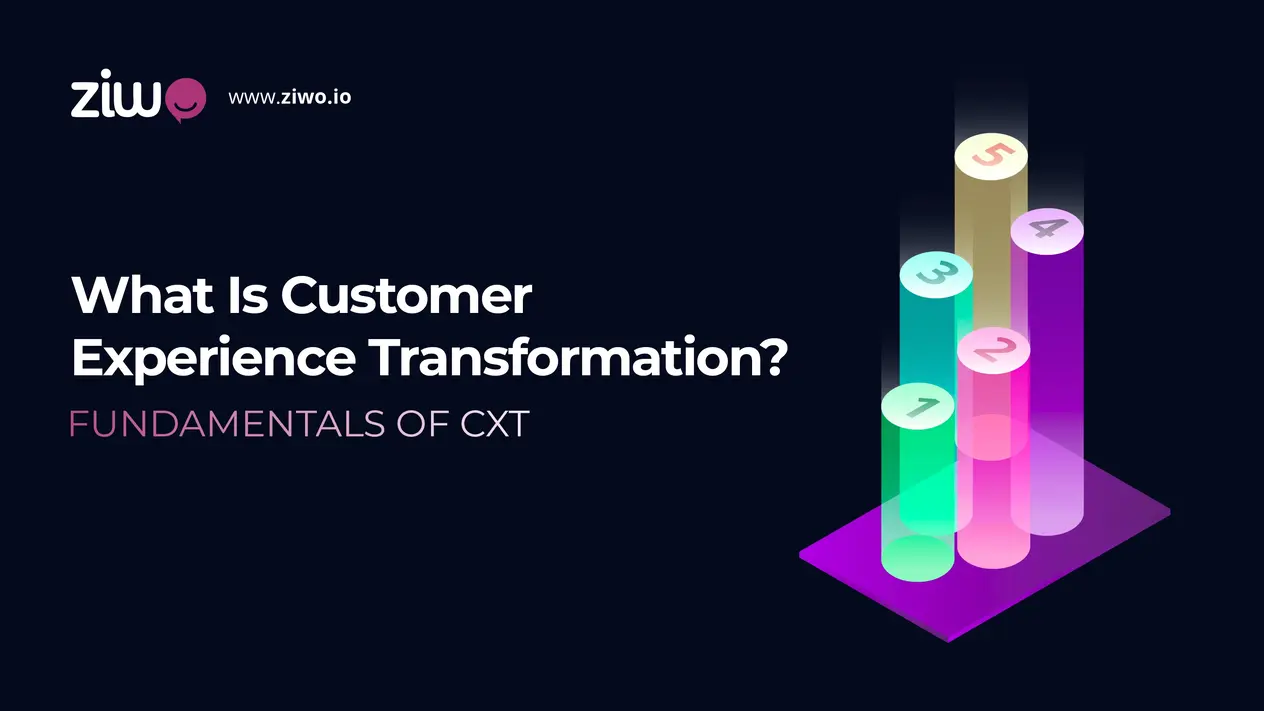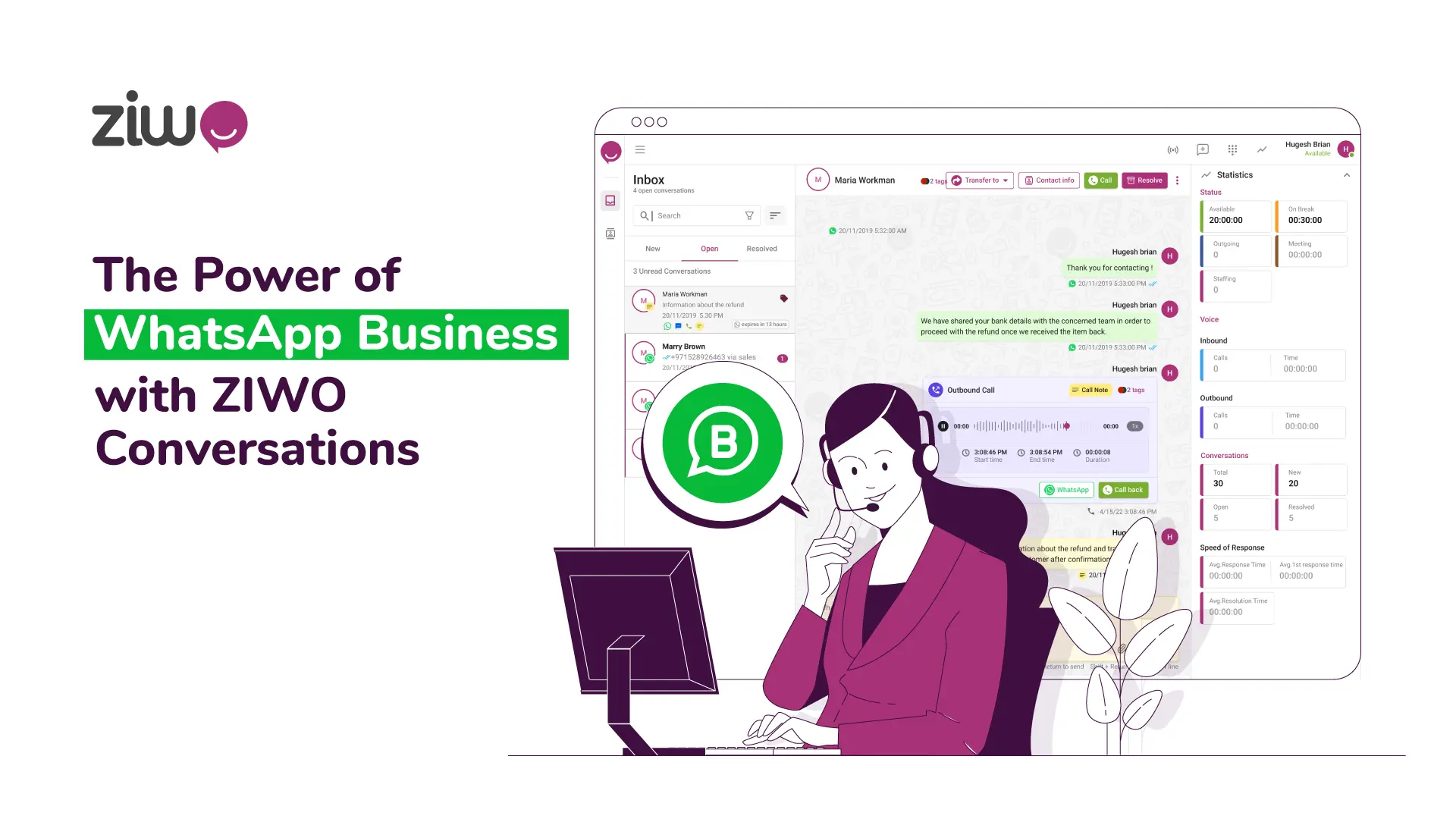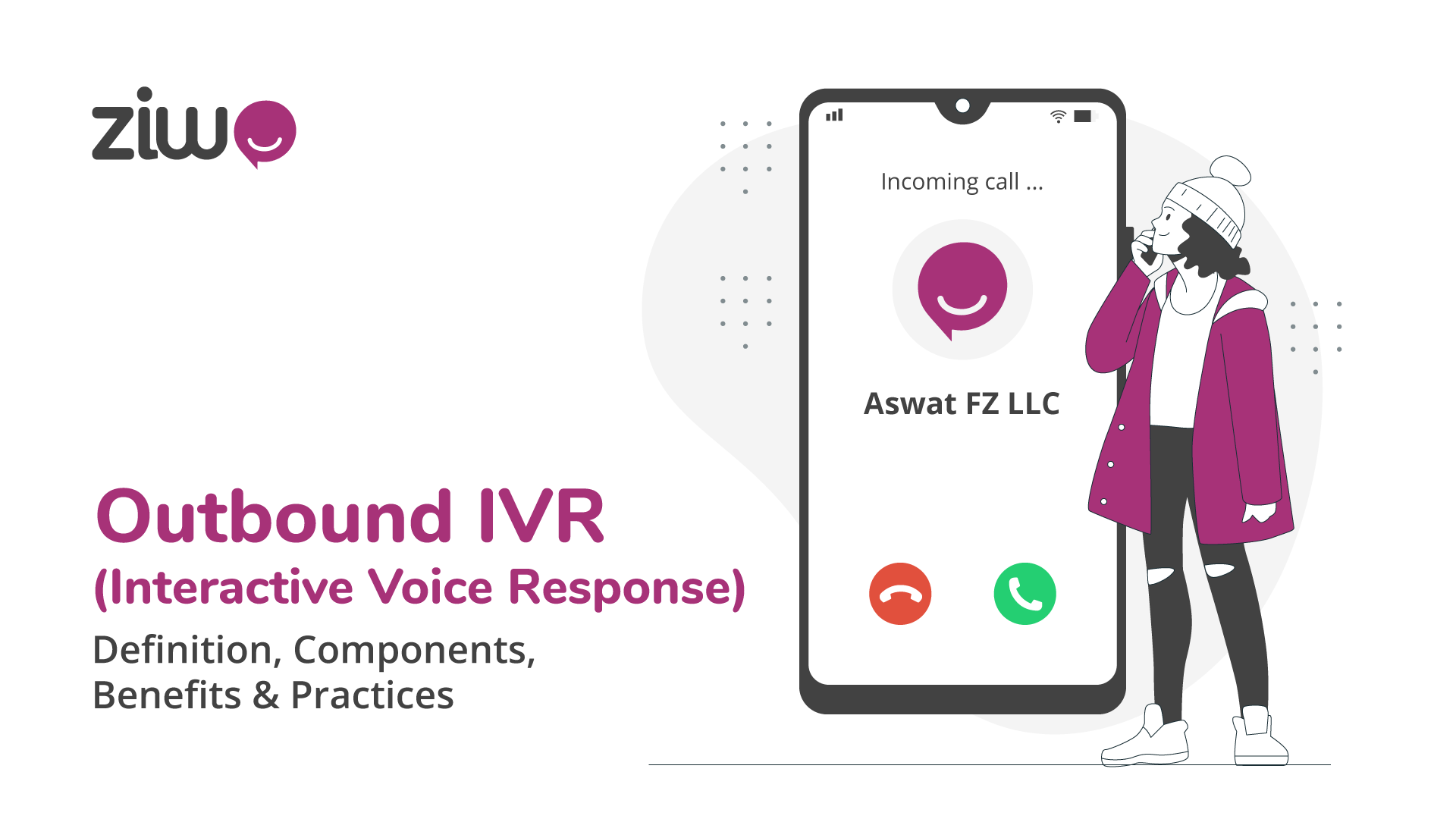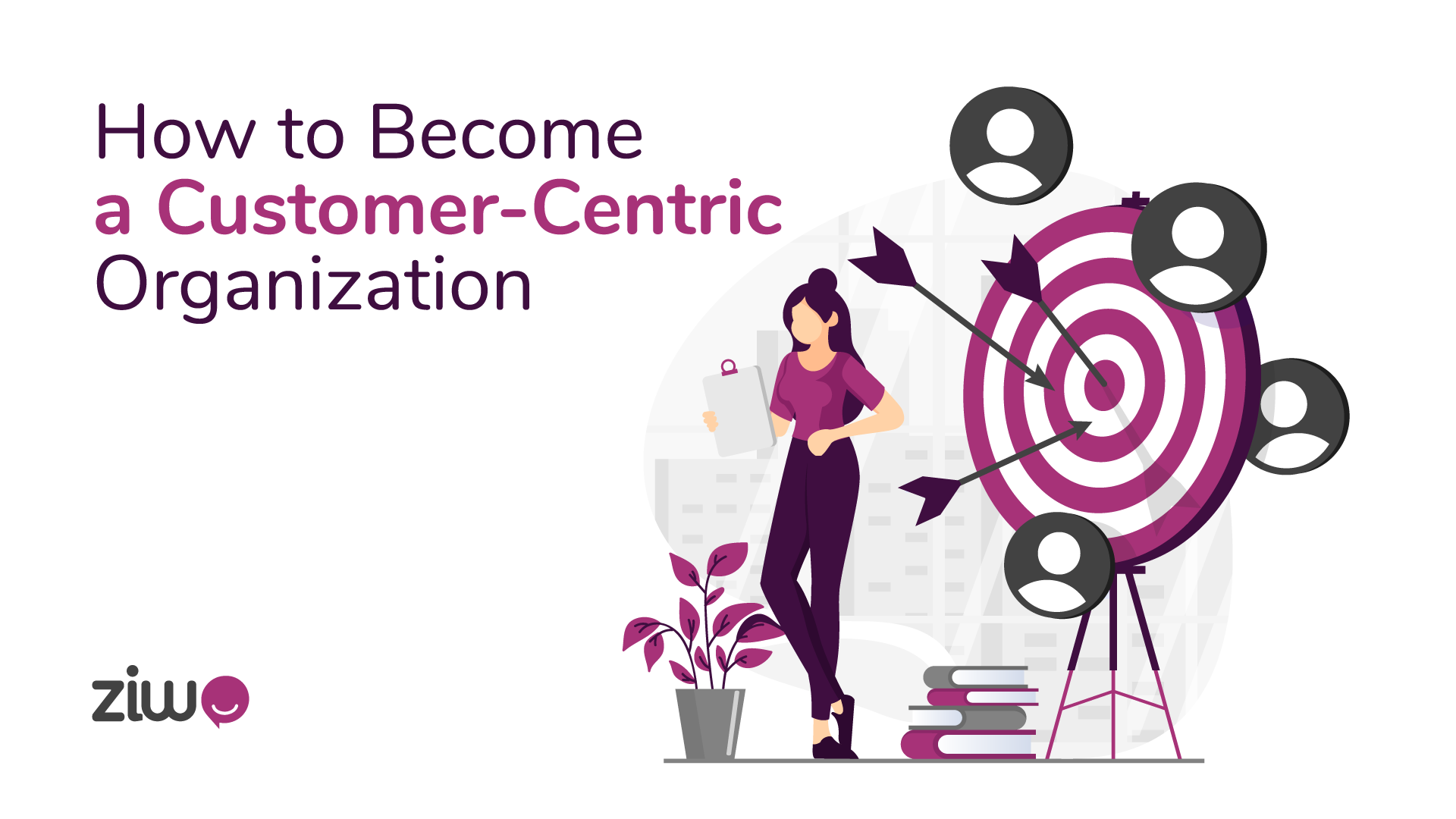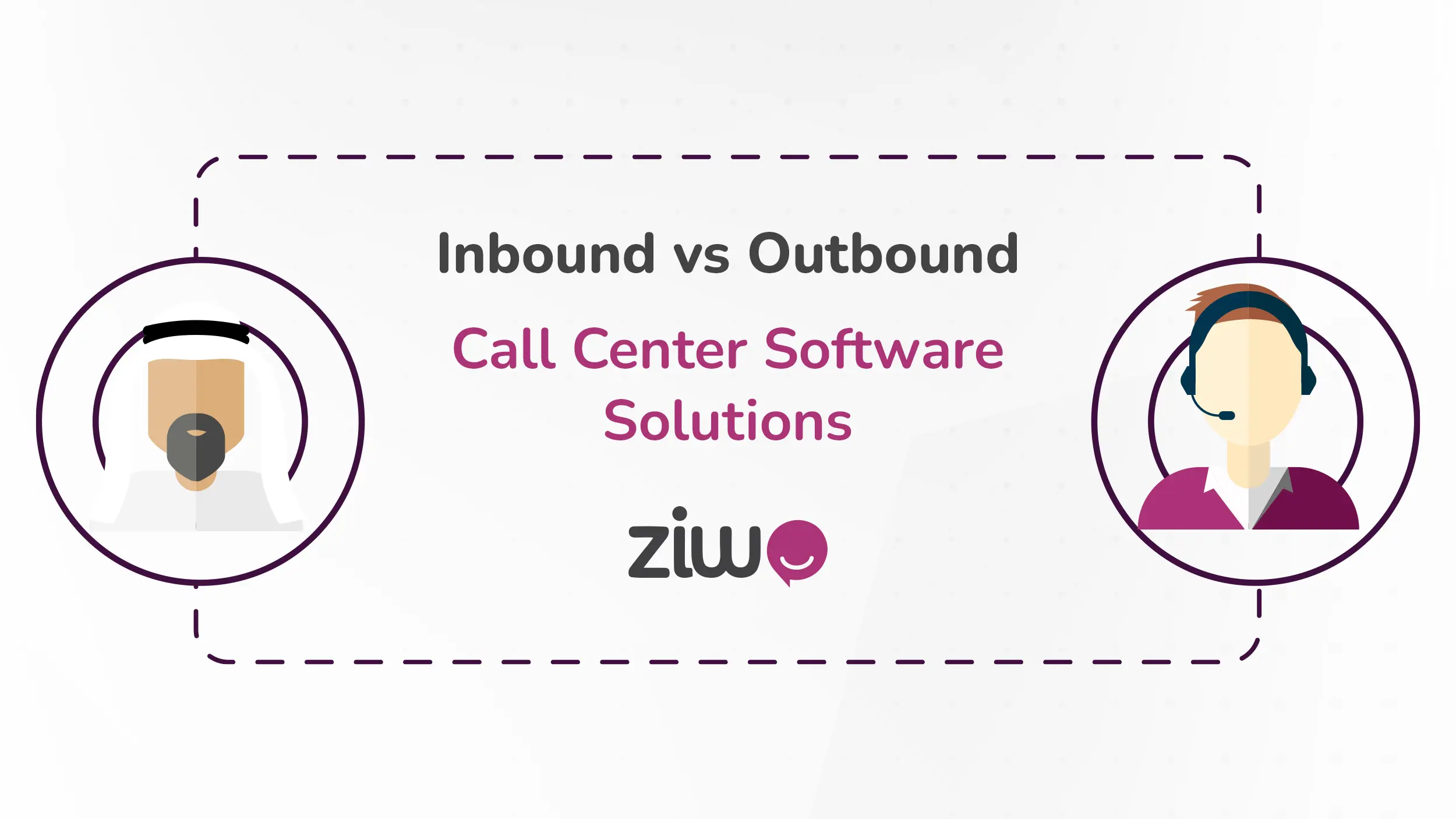
Solutions logicielles pour centres d'appels entrants ou sortants
En tant que professionnel, responsable de centre d'appels ou décideur, votre rôle dans le choix de la bonne solution logicielle pour centre d'appels est crucial. Devriez-vous opter pour un logiciel de centre d'appels entrants, un logiciel de centre d'appels sortants ou une solution capable de remplir les deux fonctions ? Cette décision requiert votre expertise et votre compréhension des besoins de votre organisation.
Vous devez prendre en compte denombreux facteurs avant de choisir le bon type de logiciel. Chaque facteur a un poids important, en particulier si vous attendez de vos agents qu'ils répondent ou qu'ils appellent plus souvent. Cela dépend également du type de centre adopté par votre entreprise. S'agit-il d'un centre d'appels dans le cloud ou sur site ?
Dans cet article, vous saurez ce qui est mieux dans chaque cas et les fonctionnalités que vous trouvez principalement dans chaque solution. Nous souhaitons donc mettre un terme à cette compétition en posant la question suivante : "Solutions logicielles pour centres d'appels entrants ou sortants, qui est le gagnant ?" Si vous avez une intuition et que vous voulez vous assurer que votre doute est valable, lisez l'article jusqu'au bout !
Définition des logiciels de centres d'appels entrants et sortants
Pour déterminer quel type de solution de centre de contact convient à votre entreprise, vous devez déterminer si votre activité est davantage axée sur les appels entrants ou sortants. Un appel entrant est un appel vocal que le client initie en raison d'une demande ou d'une requête qu'il a formulée. En revanche, dans les appels sortants, les agents proposent aux clients de nouveaux produits ou services qui correspondent à leurs préférences. Quelle est donc la différence entre les solutions logicielles pour centres d'appels entrants et sortants en ce qui concerne les fonctionnalités clés ?
Principales fonctionnalités des solutions logicielles pour centres d'appels entrants
Un système de centre d'appels entrants permet à votre entreprise de recevoir des appels de clients, de sorte que les agents peuvent prendre la ligne et interagir correctementen fonction de leurs besoins. Quelles sont, selon vous, les fonctionnalités clés les plus recherchées dans ce cas et qui favorisent également l'évolutivité du logiciel ?
1- Réponse vocale interactive
Il s'agit d'une fonctionnalité essentielle que tout centre d'appels entrants utilise pour gérer les appelsentrants2. Les menus et les invites prédéfinis permettent aux appelants de naviguer à travers vos départements et les aident à répondre à de nombreuses intentions. Ainsi, l'appelant peut finalement contacter un agent approprié ou même un libre-service. Le système est basé sur l'interaction de l'appelant, soit en appuyant sur le clavier, soit en délivrant l'information verbalement.
2- L'acheminement des appels
Le routage des appels divise votre entreprise en un groupe d'itinéraires. Chaque route mène à un département ou à un agent en particulier. Qu'est-ce qui fait que la solution d'appels entrants propose à l'appelant un certain itinéraire plutôt qu'un autre ? Cela dépend de l'entrée qu'il propose.
3- Distribution automatique des appels
Il s'agit d'une fonctionnalité supplémentaire du routage des appels, car elle prend en compte les critères que le logiciel de centre d'appels entrants doit suivre après avoir routé l'appel. Quel agent est le mieux placé pour cet appelant en particulier ? Sur la base du script intégré, le logiciel interagit automatiquement avec l'appelant pour l'aider.
4- File d'attente
Le logiciel a déterminé le chemin exact et les agents appropriés pour l'appel entrant, mais ils sont tous occupés maintenant. Il est donc préférable d'attendre dans une ligne ou une file d'attente. Un agent approprié sera à l'autre bout du fil chaque fois qu'un appel se terminera. Cette fonctionnalité clé améliorera l'efficacité opérationnelle de votre centre d'appels.
Principales fonctionnalités du logiciel de centre d'appels sortants
Un système de centre d'appels sortants permet à vos agents de passer des appels sur la base de listes de prospects qu'ils ont recueillies par le biais de canaux de marketing entrants ou de toute autre méthode. Dans la plupart des cas, la personne à l'autre bout du fil ne sait pas grand-chose de votre entreprise mais pourrait être intéressée par le type de services ou de produits que vous proposez. Quelles sont donc les fonctionnalités clés dont la solution a besoin pour ce cas d'utilisation ?
1- Numéroteur
Le logiciel de centre d'appels sortants doit inclure un composeur, qu'il soit manuel ou automatisé3! Il permet à l'agent de composer le numéro du prospect. Une fois que l'agent a terminé un appel, il entre le numéro de téléphone du prospect suivant dans le composeur.
2- Rappel programmé
Lorsque votre agent passe un appel et n'obtient pas de réponse, la solution d'appels sortants planifie automatiquement une heure de rappel. Cela se fait en fonction de ses plages horaires disponibles, ou il peut le faire manuellement.
3- Intégrations tierces avec le CRM
Les agents ne se contentent pas d'effectuer des appels à froid, ils assurent également un suivi et peuvent contacter le client pour recueillir son avis. Pour effectuer ces tâches efficacement, l'agent doit disposer de suffisamment d'informations actualisées sur le client grâce à un logiciel de centre d'appels omnicanal. Dans ce cas, l'intégration d'un système de gestion de la relation client (CRM) est indispensable !
4- Le murmure des appels
Vos agents commerciaux n'ont pas tous le même niveau d'expertise. Certains auraient besoin d'un soutien régulier, surtout si vous venez de les embaucher et qu'ils ne connaissent pas suffisamment les fonctionnalités de votre produit. La fonction de chuchotement d'appel vous permet, en tant que chef d'équipe, manager ou chef d'entreprise, de guider l'agent instantanément pendant l'appel afin d'éviter de délivrer des informations trompeuses par erreur.
Faits importants
Toutefois, certains outils inclus devraient être des fonctionnalités standard entre les solutions de centres d'appels entrants et sortants.
- Imaginez un logiciel qui ne permettrait pas aux chefs d'équipe de contrôler les performances et les indicateurs clés de performance des agents. Tous les objectifs deviendraient inutiles, en particulier si vous appliquez les OKR pour un centre d'appel agile. C'est pourquoi les fonctionnalités de reporting et d'analyse sont cruciales dans les deux types de logiciels.
- La qualité doit être au cœur de tout appel, qu'il soit entrant ou sortant. Rien ne peut mieux y parvenir qu'une fonctionnalité d'enregistrement des appels. Elle vous aide à déterminer les erreurs commises par la plupart de vos agents, ce qui vous permet de les réformer et de les guider vers le comportement, les connaissances ou les actions corrects. C'est également la fonctionnalité idéale si vous formez un nouveau groupe d'agents.
Solutions logicielles pour centres d'appels entrants et sortants
Vous voulez savoir quel est le meilleur logiciel en général ? Ou quel est celui qui convient le mieux à votre entreprise et favorise sa croissance ? Lorsque nous comparons les deux, cela signifie que l'un est meilleur que l'autre dans votre cas. Dans d'autres cas, le contraire peut être vrai.
Différence fonctionnelle entre les solutions logicielles pour centres d'appels entrants et sortants
Les principales différences fonctionnelles entre un logiciel de centre d'appels entrants et un logiciel de centre d'appels sortants sont les suivantes :
Fonctions clés de la solution logicielle pour centre d'appels entrants
Le centre d'appels entrants permet de communiquer avec une clientèle déjàétablie11. Il s'agit de clients qui utilisent vos services et que vous souhaitez fidéliser à votre marque. Les fonctions semblent donc différentes de celles du centre d'appels sortant.
- Support technique: Votre client appelle le centre d'appel pour que son problème soit résolu. Il peut s'agir d'un problème technique ou même d'une question sur la raison de la lenteur de la livraison. Dans ce cas, l'agent du service d'assistance à la clientèle fournit toutes les informations et effectue toutes les actions nécessaires pour mettre fin au problème. Le logiciel met à jour le statut du ticket chaque fois que l'agent le traite.
- Demandes de mise à jour et de renouvellement de produits: Si le client est au courant des nouveaux services ou produits proposés par votre entreprise, il devrait être curieux. Dans ce cas, l'agent du service clientèle lui fournit des informations susceptibles d'influer sur sa décision future. Le logiciel mesure rapidement les indicateurs clés de performance en fonction du nombre d'appels réussis par l'agent.
Principales fonctions du logiciel de centre d'appels sortants
Votre centre d'appels sortants traite principalement avec des prospects et des personnes qui ne sont pas encore en relation avec votre entreprise :
- Génération de leads: Lors des campagnes, votre équipe marketing a généré une liste de prospects qui ont rempli leurs coordonnées. Vos agents commerciaux commencent à effectuer des appels à froid pour identifier le besoin qui motive l'engagement du client. L'agent, avec l'aide du logiciel, décrira le statut de chaque prospect.
- Étude de marché: Si vous lancez un nouveau produit ou service, l'étude de marché vous sera utile. Appeler vos clients potentiels peut être le meilleur moyen de prévoir l'impression que laissera ce produit lors de sa sortie. Le logiciel enregistre les statistiques qui servent les objectifs de l'étude.
- Prise de rendez-vous: De nombreuses entreprises ont besoin de rencontrer leurs clients au bureau, en particulier si votre activité concerne les soins de santé. Le fait d'appeler le client ou le patient pour s'assurer du rendez-vous a un effet plus professionnel. L'intégration avec les calendriers et les systèmes de gestion de la relation client (CRM) sera toujours un ajout essentiel au logiciel.
Cas d'utilisation des solutions logicielles pour centres d'appels entrants et sortants
Pour mieux comprendre les utilisations des logiciels de centres d'appels entrants et sortants, voici quelques cas d'utilisation qui pourraient compléter votre vision de ces solutions robustes.
Cas d'utilisation des solutions logicielles pour centres d'appels entrants
En plus des fonctions que nous avons illustrées dans les sections précédentes, il existe quelques cas où le logiciel de centre d'appels entrants est approprié.
- Commande et annulation: Un logiciel de centre d'appels entrants peut facilement gérer les billets de réservation, les produits réservés et les demandes d'annulation formulées par les clients.
- Demandes de renseignements de base: Répondre aux demandes de renseignements de base des prospects et des clients potentiels augmente la probabilité de les convertir en clients fidèles. Cet appel entrant est l'occasion pour l'entreprise d'obtenir du client des données qui pourraient être recyclées prochainement, telles que son nom, son numéro de téléphone, ses centres d'intérêt, etc.
Cas d'utilisation des solutions logicielles pour centres d'appels sortants
Vous avez déjà pris connaissance de certaines fonctions pour lesquelles les centres d'appels sortants utilisent le logiciel. Cette sous-section aborde les principaux cas d'utilisation tirés de situations réelles et de stratégies appliquées.
- Télémarketing: La principale responsabilité de l'agent est de gagner de nouveaux adeptes qui pourraient devenir des clients potentiels. Il les sensibilise donc à la marque, au secteur et au produit proposé. Il se peut qu'ils n'en aient pas besoin actuellement, mais qu'ils en aient besoin à terme. Toutes les données collectées par l'agent sont stockées dans la base de données du logiciel.
- Télévente: Si l'agent ne conclut pas l'affaire par téléphone, il ne touchera pas sa commission. L'accord détaille le montant que le client paiera, le nombre d'utilisateurs s'il s'agit d'un service SaaS, la durée de l'abonnement, et bien d'autres choses encore dans le logiciel.
Conclusion : Faire le bon choix en fonction de vos besoins
"Les solutions logicielles pour centres d'appels entrants ou sortants ont toujours fait l'objet de discussions et de conférences. Sur la base des fonctions, des fonctionnalités et des cas d'utilisation que nous avons illustrés tout au long de l'article, vous pouvez maintenant reconnaître judicieusement comment choisir le logiciel de centre d'appels qui correspond aux besoins de votre entreprise, en tenant compte de la flexibilité et de l'évolutivité du logiciel.
Références bibliographiques
1 - Logiciels de centres d'appels entrants et sortants :
¹ Middleton, C., & Longford, G. (2016). Internet et les télécommunications : The Transformation of Voice Services. MIT Press.
² Levin, D. (2017). Les systèmes IVR dans les centres d'appels modernes : Automatisation et expérience client. McGraw-Hill.
2 - Intégration des logiciels de centres d'appels et outils tiers :
³ Marston, S., Li, Z., Bandyopadhyay, S., Zhang, J., & Ghalsasi, A. (2011). Cloud Computing-The Business Perspective. Decision Support Systems, 51(1), 176-189.

